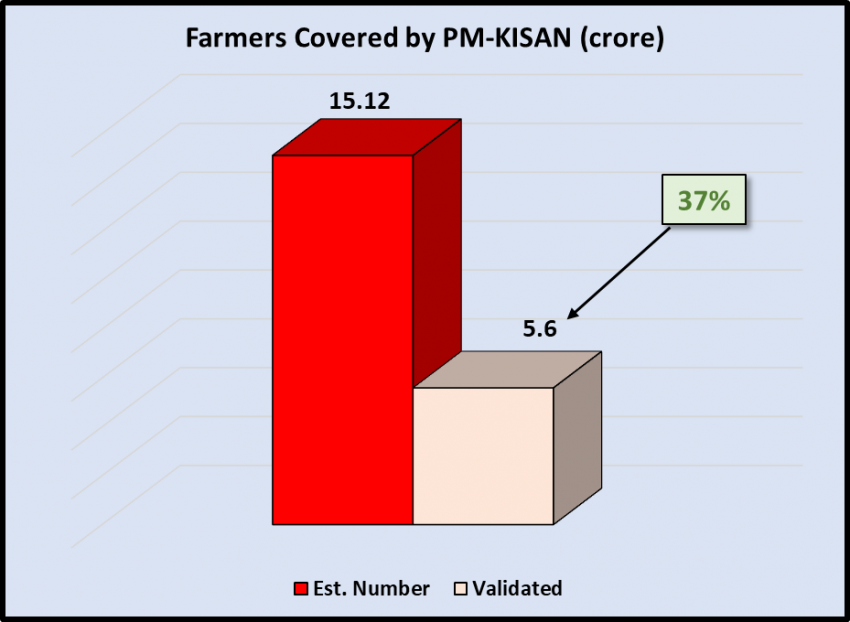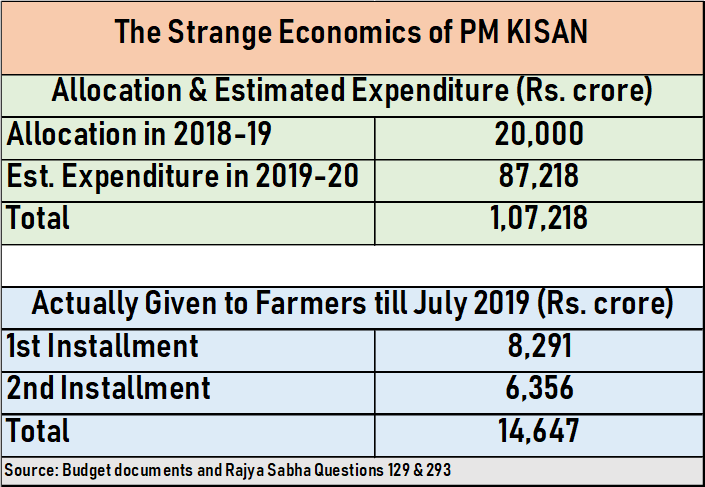Just 37% of eligible farmers have been validated and only 21% have got the second instalment.
But recent revelations about the nuts and bolts of its coverage show that the scheme is badly floundering. Out of an estimated 15.12 crore farmers that the government declared eligible for getting the Rs.6,000 per year dole in its expanded version, just 5.6 crore have been validated as of July 22 this year, according to the official portal maintained by the agriculture ministry. That’s 37% of the total eligible farmers.

Even more damning are the disbursal figures. About 27% of the eligible farmers – some 4.15 crore – got the first instalment of Rs.2,000 each before the elections. The amount per farmer was not much and less than a third got it, but hopes were high that more was coming, and for everybody. The total amount disbursed in the first instalment was Rs.8,290.61 crore, according to the newly appointed agriculture minister Narendra Singh Tomar, responding to question no.293 in Rajya Sabha on July 19.
In the ongoing disbursal of the second instalment (also of Rs.2,000 each) about Rs.6,355.86 crore have been distributed. That’s 21% of the eligible farmers. This means that not even all those who got the first instalment have received the second one. This is strange because there should be no problem of verification of land titles or bank accounts or Aadhar for these farmers. All of this must already have been done when the first tranche was sent out.
The revised estimate for 2018-19 presented in the full Budget this year has given Rs.20,000 crore as having been spent (presumably for the first instalment). But the total amount disbursed for both instalments adds up to only Rs.14,647 crore!

Meanwhile, in response to an earlier query (no.129) answered by the same minister on June 21, it was revealed that with the expansion of the scheme to cover all farmers, “the expected expenditure of the Scheme for the financial year 2019-20 has been revised to Rs.87,217.50 crore, including the administrative charges of Rs.217.50 crore.” The government had initially allocated Rs.75,000 crore in the Budget for 2019-20.
So, the bottom line is this: the government has set apart a total amount of Rs.1.07 lakh crore for disbursal to farmers under PM KISAN, but five months down the line it has managed to actually give out only Rs.14.647 crore – that’s about 14% of the total.
Some States Are Far behind
Looking at individual states, one finds from the information provided in Parliament, that some of them are lagging far behind others. One major state, West Bengal, has refused to implement the scheme altogether. In Bihar, only 11% of the eligible 1.7 crore farmers and in Madhya Pradesh, only 14% of the slightly over 1 crore have been validated. In fact, only a handful of states have validated more than 50% of the eligible farmers.

In Jharkhand, Manipur and Nagaland, the government has set up a high-level committee to resolve a knotty problem – land records in tribal areas are not kept in the usual manner. The original owner lived generations ago and land has passed down without any changes on paper – or maybe there is no paper at all, forget digital records. In fact, many of the North-Eastern states have this dimension. In Punjab, the number of validated farmers is more than the estimated number because of the peculiarity of a high degree of leasing in/out of land.
The government admits that delays are taking place primarily because of verification of land records, and also because of the usual glitches in electronic financial transfers – mismatches in bank account details, spelling of names, etc.
At the rate at which things are going, it may take months for all the wrinkles to get ironed out, if at all. And, the hapless farmers will end up with a measly amount in the end.
[Peeyush Sharma assisted in data collation and processing.]
Courtesy: News Click
